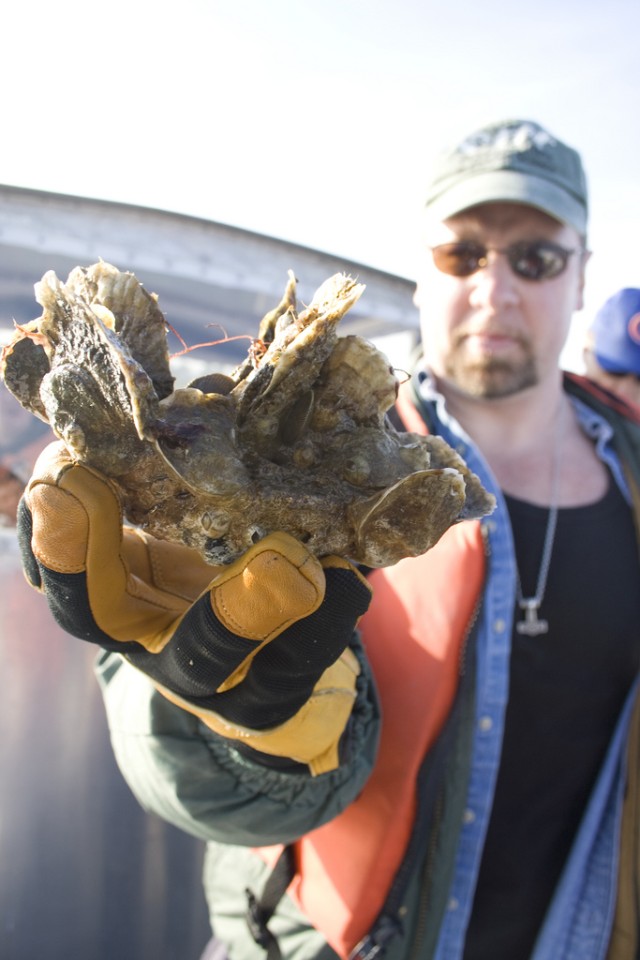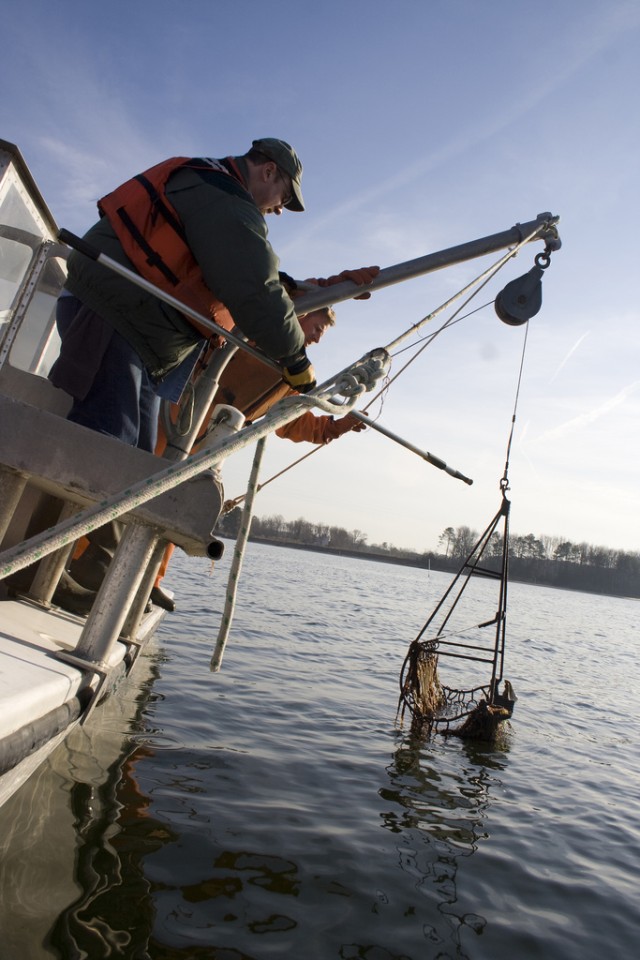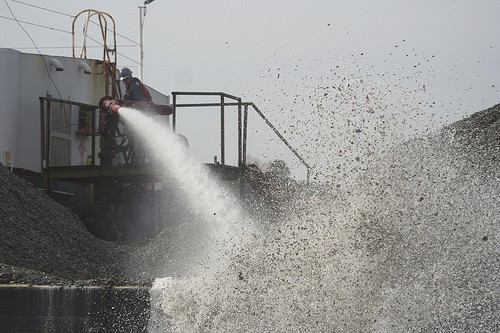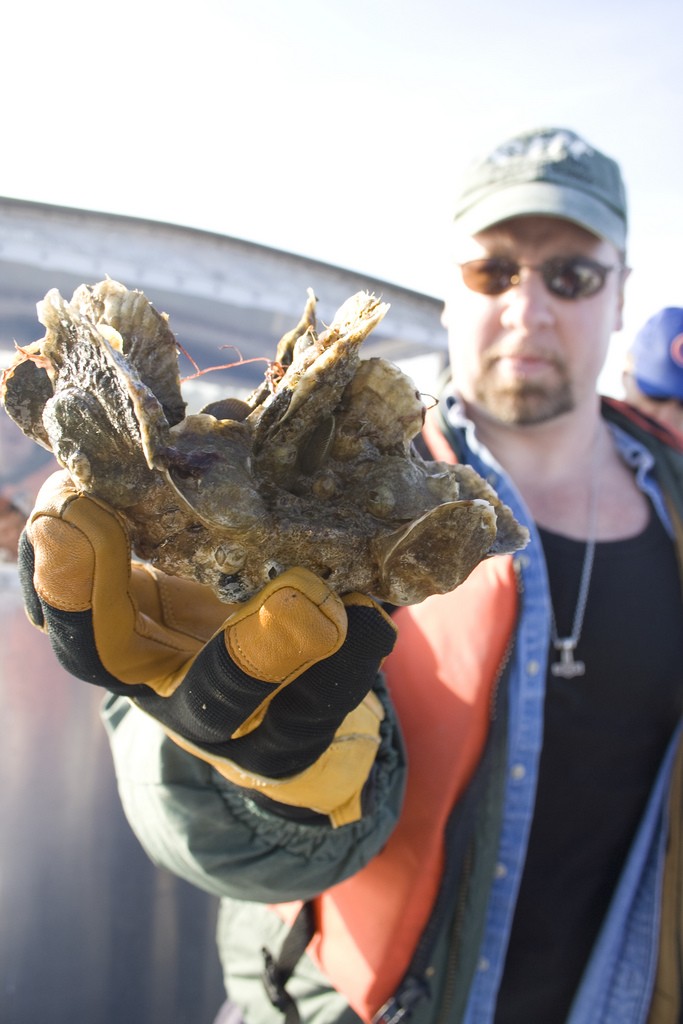NORFOLK, Va. (Aug. 14, 2009) -- With the stroke of a pen here Thursday, the commander of the Norfolk District, U.S. Army Corps of Engineers, set the agenda for Chesapeake Bay oyster restoration and ended the controversy over the introduction of a non-native species.
The document signed by Col. Andrew Backus, known as a record of decision, ended an extensive five-year study and confirmed the Corps, the Commonwealth of Virginia and the State of Maryland all agreed on an oyster restoration strategy focused solely on the native Eastern oyster.
The study, known as a Programmatic Environmental Impact Statement, or PEIS, began when state officials -- facing a native oyster population ravaged by disease, over harvesting, and destruction of habitat -- proposed the introduction of a the non-native, disease-resistant Suminoe oyster, a native of the China Sea, said Craig Seltzer, chief of Norfolk District's environmental analysis section.
Under the National Environmental Policy Act of 1969, the proposal triggered the requirement to assess not only the proposed action, but also a range of options for restoring oysters to the Chesapeake Bay and an evaluation of the potential environmental consequences of those options, Seltzer explained.
The Corps, Maryland and Virginia were the lead agencies for study. Cooperating federal agencies included the U.S. Environmental Protection Agency, U.S. Fish and Wildlife Service, and the National Ocean and Atmospheric Administration. The Potomac River Fisheries Commission and Atlantic States Marine Fisheries Commission also participated in the PEIS process.
Alternatives considered by the participating agencies and submitted for public comment included taking no action, a harvest moratorium, introducing the non-native oyster, expanded aquaculture efforts, abandoning Eastern oyster efforts, and various combinations of alternatives, said Mark Mansfield, the Norfolk District's planning and policy branch chief and project manager for the oyster PEIS.
"The current state of the science and extensive public discourse made it clear that the use of non-native oysters in Chesapeake Bay, its tidal tributaries, and the coastal bays and waters of Maryland and Virginia posed unacceptable ecological risks," said Mansfield. "The record of decision reflects a sustainable solution to restoring the oyster in the Chesapeake Bay."
In addition to being a sustainable solution, the record of decision is also consistent with the Army's Chesapeake Bay Strategy and President Obama's Executive Order 13508, Chesapeake Bay Protection and Restoration, Mansfield said.
"This record of decision is the culmination of years of scientific study and collaboration by the involved federal, state and supporting agencies," said Col. Andrew Backus, Norfolk District commander. "The lead agencies focused on achieving a consensus document that minimizes environmental risks and best serves the public interest. I'm confident we've achieved those goals and look forward to our continued and future role in native oyster restoration."
Related Links:
Maryland Department of Natural Resources
Virginia Marine Resources Commission








Social Sharing